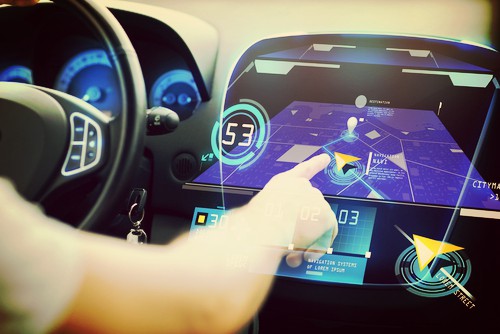
Most of us can’t even imagine what it was like to travel before in-car navigational systems or smart phone apps were there to give us directions and tell us where the nearest good steak house is. Technology has made our lives easier in so many ways, but it has also increased distracted driving and unnecessary car accidents caused by those drivers.
Even if we look solely at cell phone use, the numbers are staggering. Data from the U.S. Department of Transportation (DOT) show cell phones to be a factor in 1.6 million vehicle crashes annually. The human toll is high, with cell phone-related accidents causing 6,000 deaths and over half a million injuries every single year.
Defining Distracted Driving
Experts classify distracted driving into one of three types:
- Visual (taking your eyes off the road);
- Manual (taking your hands off the wheel);
- Cognitive (taking your mind off driving).
Unfortunately, the technology we use while driving can cause all three types of distracted driving. Too often, our technology creates visual, manual, and cognitive distractions at the same time. Contrary to popular belief, hands-free technology does not significantly lessen driver’s distractions. It may, at times, eliminate manual distraction, but that impact can be offset by additional risky behaviors undertaken by drivers who believe hands-free tech is safer than it is.
We can all relate to using well-intentioned technology that adds to distraction time due to glitches, slow responses, or freezing. In a study of hands-free technology, the AAA Foundation for Traffic Safety found that even the best-performing system resulted in a driver who was distracted for 15 seconds after using in-car voice commands. Scarier still were the poorly performing systems, which distracted drivers for nearly 30 full seconds after use.
The National Highway Traffic Safety Administration (NHTSA) has provided guidelines for car manufacturers in hopes of encouraging development of less distracting technology. They recommend designs that do not required drivers to look away from the road for more than two seconds at a time or 12 seconds per task. This hardly classifies as conservative when a vehicle traveling under the highway speed limit could travel two hundred feet in the two seconds the driver’s eyes are off the road. The NHTSA also recommends designers and manufacturers:
- Keep task lengths and complexity levels low;
- Ensure device can be operated one-handed;
- Limit unnecessary visual information in the driver’s field of view;
- Require a minimal number of manual inputs for device operation.
What About Systems Like Tesla’s Autopilot?
There are many questions after a vehicle crash killed a man driving with Tesla’s Autopilot engaged. Autopilot is, after all, a system intended to reduce driver workload and increase safety. Like an advanced form of cruise control, Autopilot is not intended to allow drivers to disengage from the driving process. Still, the NHTSA’s investigation into the accident may hinge upon whether or not Tesla clearly articulated this to consumers.
While a fatal auto accident occurs every 94 million driving miles, the Tesla accident was the first Autopilot-engaged fatality in 130 million driving miles. Does this mean Tesla’s technology may actually decrease auto accidents and traffic fatalities? Perhaps, but it will be interesting to follow the investigation into such new technology.
Were You Injured in an Accident Caused by a Distracted Driver?
The experienced car accident attorneys at Rhoads & Rhoads can help. Our team will listen and support you in your time of difficulty, and we will fight to get the compensation you deserve. Call us today for a completely FREE consultation: 888-709-9329


